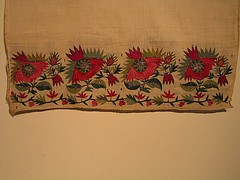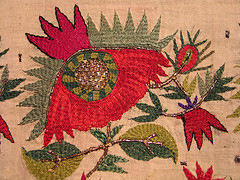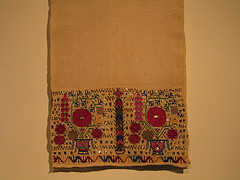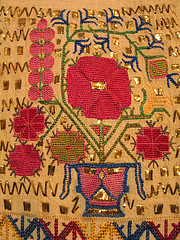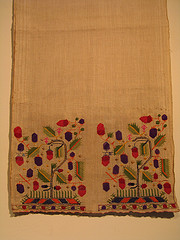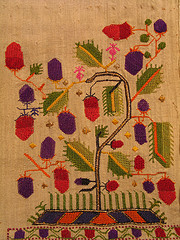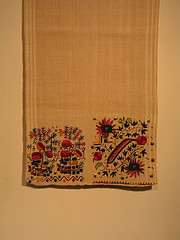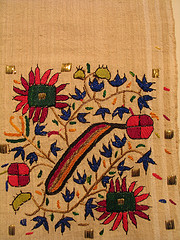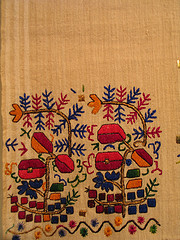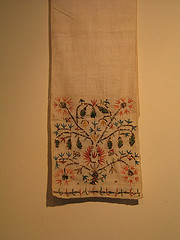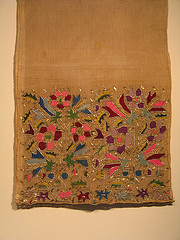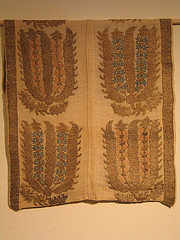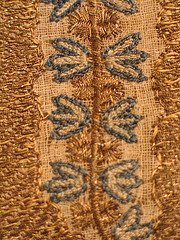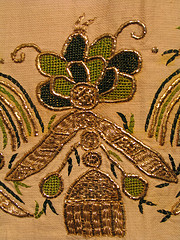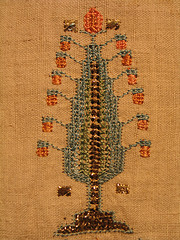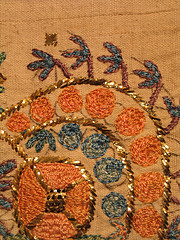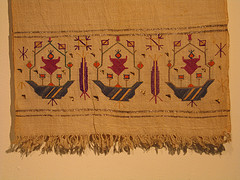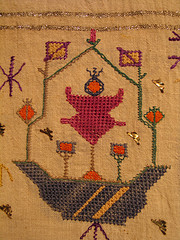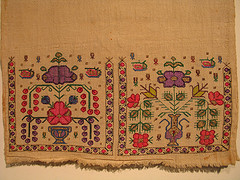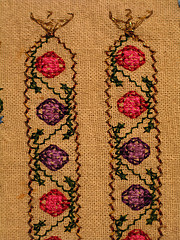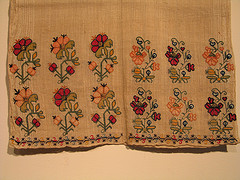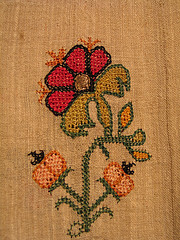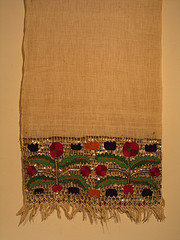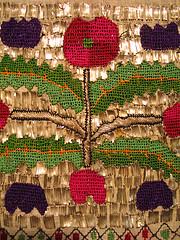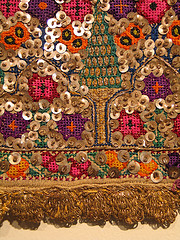 |
 |
| HOME | ABOUT | CD-ROMs | COURSES | GALLERY | NEWS | PUBLICATIONS | CONTACT | |

|
|
The Gallery at The Greek InstituteThe following are from the Doreen Canaday Spitzer Collection at The Greek Institute 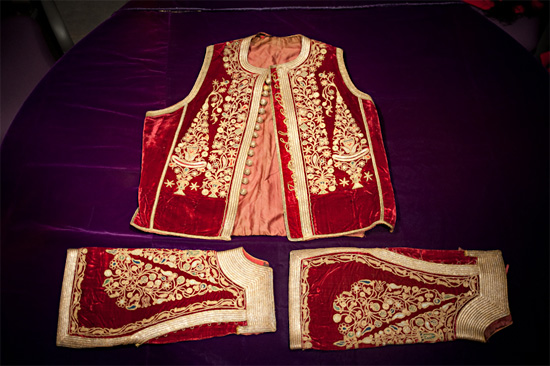 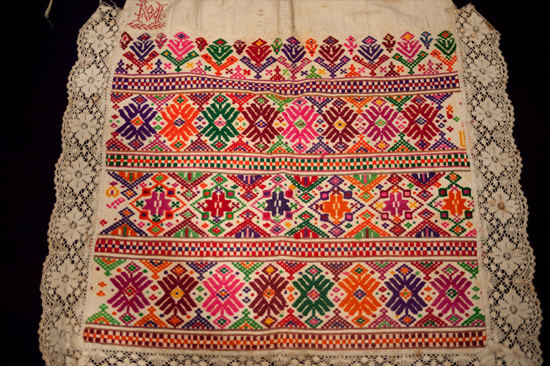 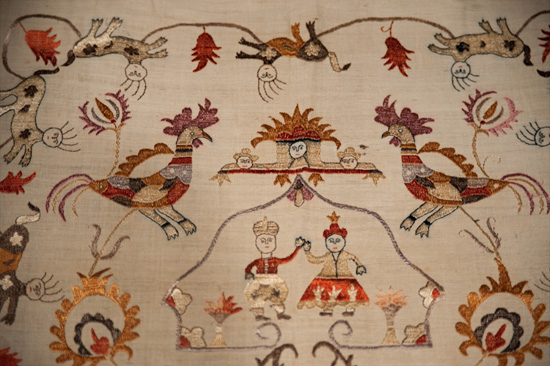 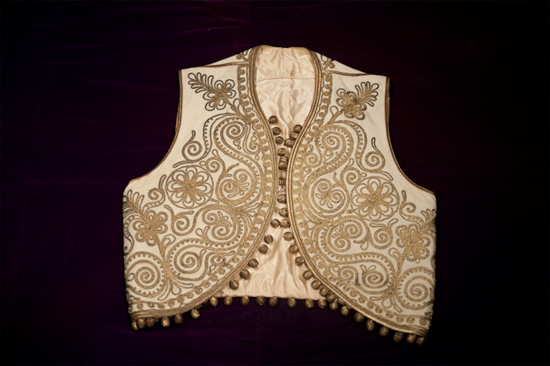 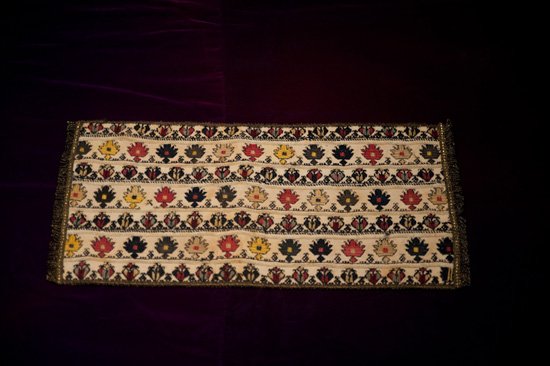 Greek embroidery, one of the most renowned handicrafts of Byzantium, flourished between the middle of the 17th and the end of the 19th centuries. Embroideries were used to decorate the home, adorn traditional costumes, ecclesiastical garments and cloths. They could be identified according to their place of origin - Asia Minor, Constantinople, Cyprus, Thrace, mainland Greece, the Aegean or Ionian islands. Although styles and designs were transmitted either through commerce or marriage, particularly in the islands, strong regional patterns and techniques were preserved. Depending on the materials used, Greek embroideries could be classified as (a) colored, worked in dyed threads, (b) white, using white silk or cotton threads, (c) lace, worked in cotton with needles, crochet or bobbins, and (d) gold-embroidered, produced with the use of metal threads, gold and silver wire and gilded wire. The decorative motifs were arranged horizontally, vertically, diagonally or in a circle with patterns repeating or alternating. For example, bouquets or vases of flowers might alternate with cypress trees throughout an entire piece. Certain motifs were more popular such as the "tree of life" - a motif in Christian art referring to the Cross, signifying resurrection and eternal life, and also, fruitfulness and nature's bounty. Other common motifs were crosses, birds, flowers, double-headed eagles, churches, rosettes, anthemia - honeysuckle or palm leaves in radiating clusters, and geometric patterns. The following embroideries are from the Greek Institute's permanent collection of embroideries, textiles and folk costumes. These pieces in particular were donated by George C. Decas of Wareham, MA, an avid collector of Greek folk arts. Most are tsevredes, hand-woven pieces of gossamer-thin silk, fine cotton or linen, embroidered with floral patterns and vines, female figures, houses, crosses and churches. Originally, they were used as accessories, and then as articles of decoration.
|
|
| HOME ABOUT CD-ROMs COURSES GALLERY NEWS PUBLICATIONS CONTACT | |
